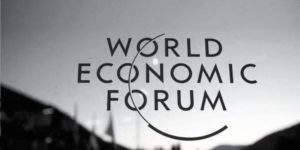The World Economic Forum Foundation has been increasingly involved in programmes that address the global environmental challenges. In its recent report released on Friday, September 14th, the Forum identifies as many as 65 use cases for the blockchain technology.
The report identifies the importance of conserving the environment and ways in which the distributed ledger technology can be applied in solving environmental conservation challenges. This report comes barely a day after the Forum also jointly released another report which estimated that blockchain technology could add over $1 trillion to the volume of global trade in the next decade.
In the environmental conservation report titled “Building Block(chain)s for a Better Planet,” the WEF identifies at least eight applications of blockchain that it refers to as game changers if applied appropriately towards solving environmental degradation issues. The report also identifies environmental degradation and climate change as the two main challenges that blockchain applications should be geared towards solving.
The eight game-changers that are identified in the report are briefly discussed below.
- ‘See-through’ supply chains – the blockchain is touted as a transparent medium where the ledger (especially the permissionless ledgers) is maintained by the general public from decentralized locations. This nature of the blockchain applications can be applied to recording transactional data across the supply chain thereby effectively establishing an immutable record of provenance. This application of the blockchain can be used to optimize the supply and demand management while at the same time also discourage the establishment of illegal industries that are the leading contributors to environmental degradation.
- Decentralised and sustainable resource management – by decentralizing governance and supply chain management, crucial resources can avoid having a central point of attack and failure. As an example, the energy grid system and the water management system are great candidates for disruption.
- New sources of sustainable finance – using the blockchain, individuals have better access to capital to create environmentally friendly applications and projects. The green energy sector has seen several projects get funded thus far in a similar manner.
- Incentivizing circular economies – circular economies included products that are renewable and that are often undervalued. For instance plastics and recyclable materials. The blockchain can be used to incentivize global participants to better value these resources and therefore avoid wastage and environmental degradation.
- Transforming carbon (and other environmental markets) – carbon emissions are the leading environmental degraders. Therefore WEF predicts that if blockchain can be deployed to reduce carbon emissions, applications such as those increasing the transparency of the supply chain will be able to achieve this end. Knowing who has the greatest impact on the environment is useful in identifying how to solve the problem in the first place.
The rest of the remaining game-changers include implementing the blockchain in next-gen sustainability monitoring, reporting and verification, automatic disaster readiness and humanitarian relief and development of earth management platforms.
The report acknowledges that adopting the distributed ledger technology is both risky and beneficial and poses three instrumental questions to environmentalists and world leaders who could be looking into solutions to challenges such as climate change though blockchain applications. The questions are:
- Will blockchain solve the actual problems?
- Can you acceptably manage the downside or unintended consequences?
- Have you built the right ecosystem of stakeholders?
This is an eye-opening report full of practical implementations for any environmentally-conscious entrepreneur who is looking to create blockchain solutions to help conserve the environment.











